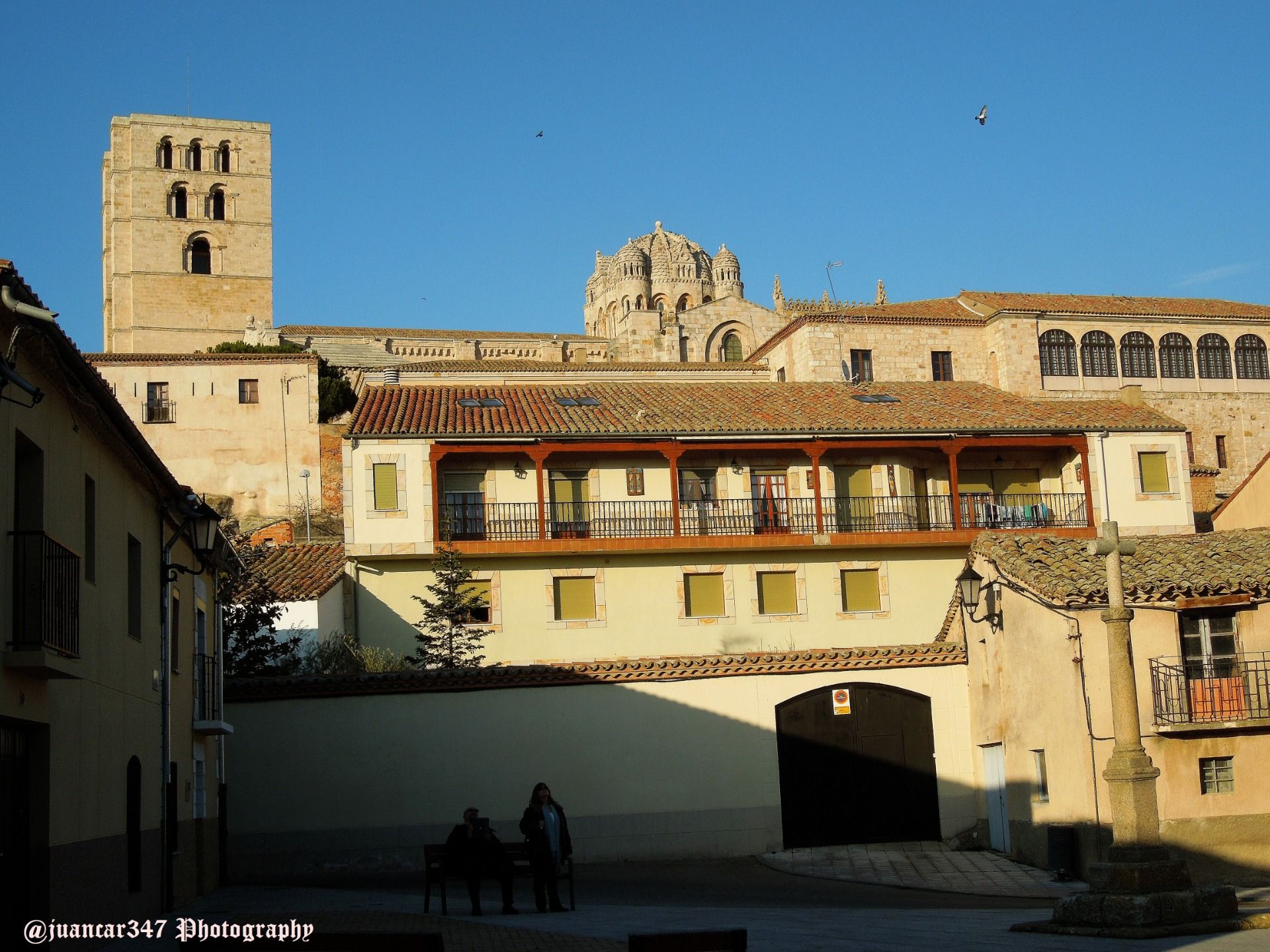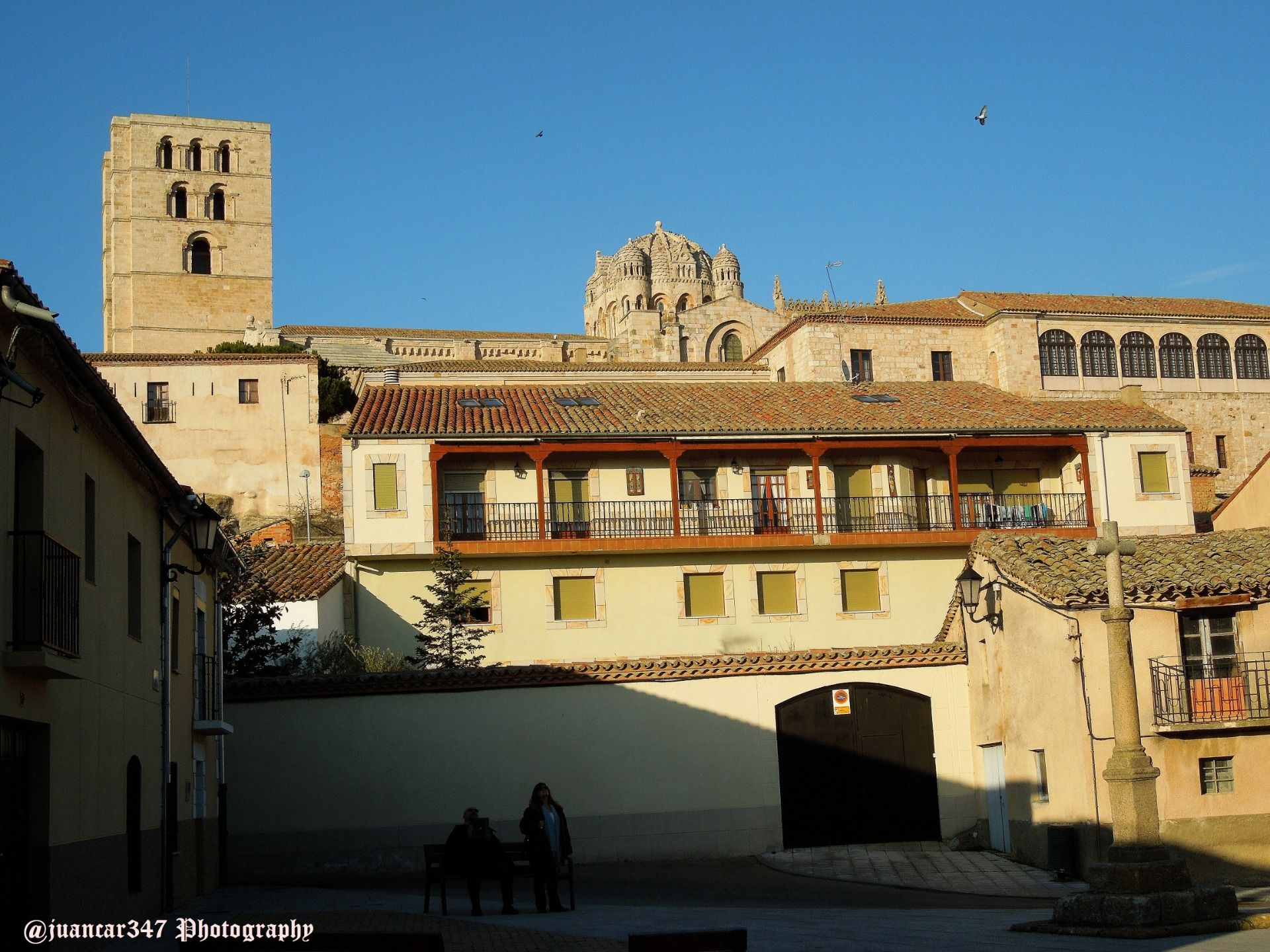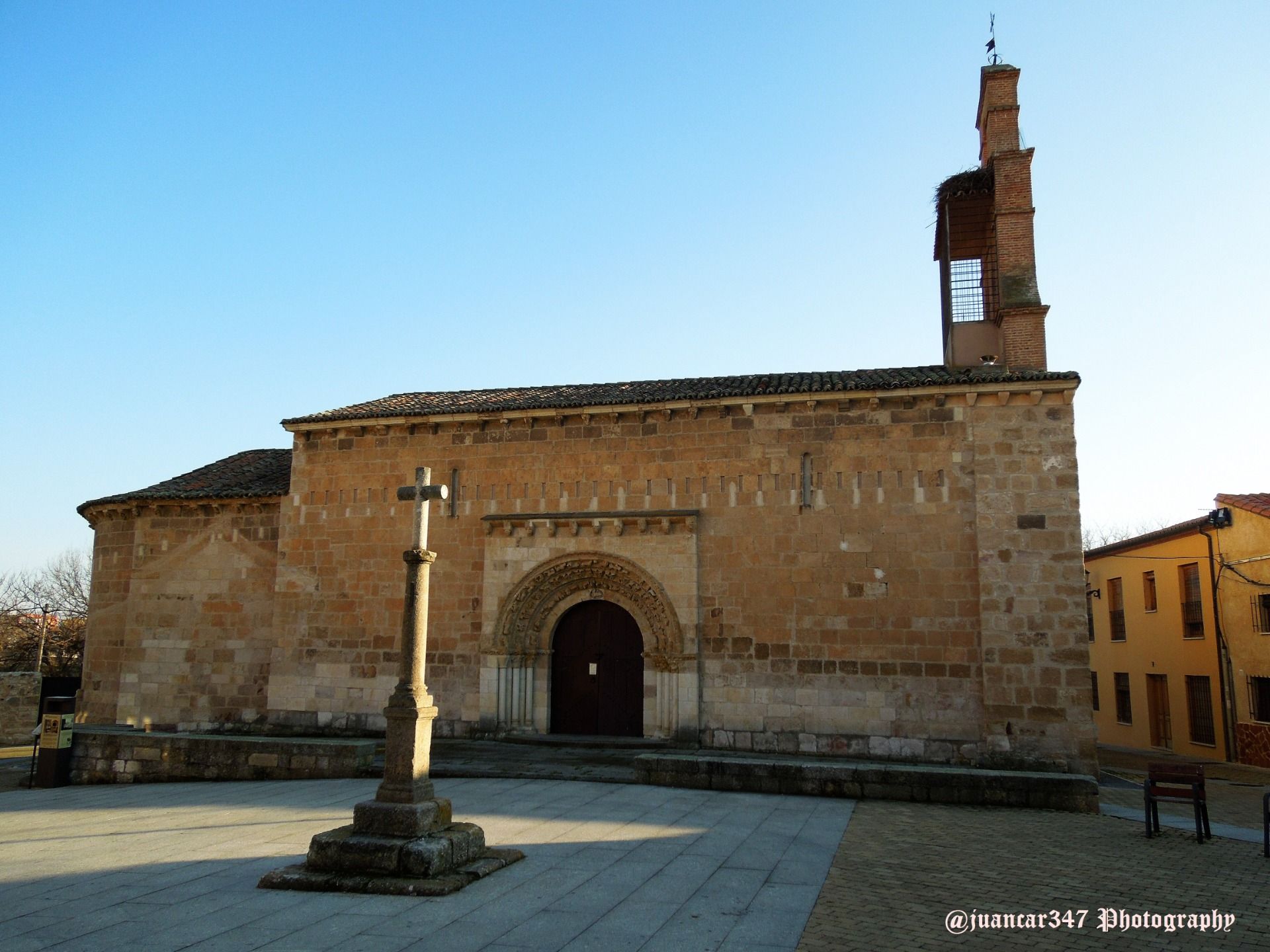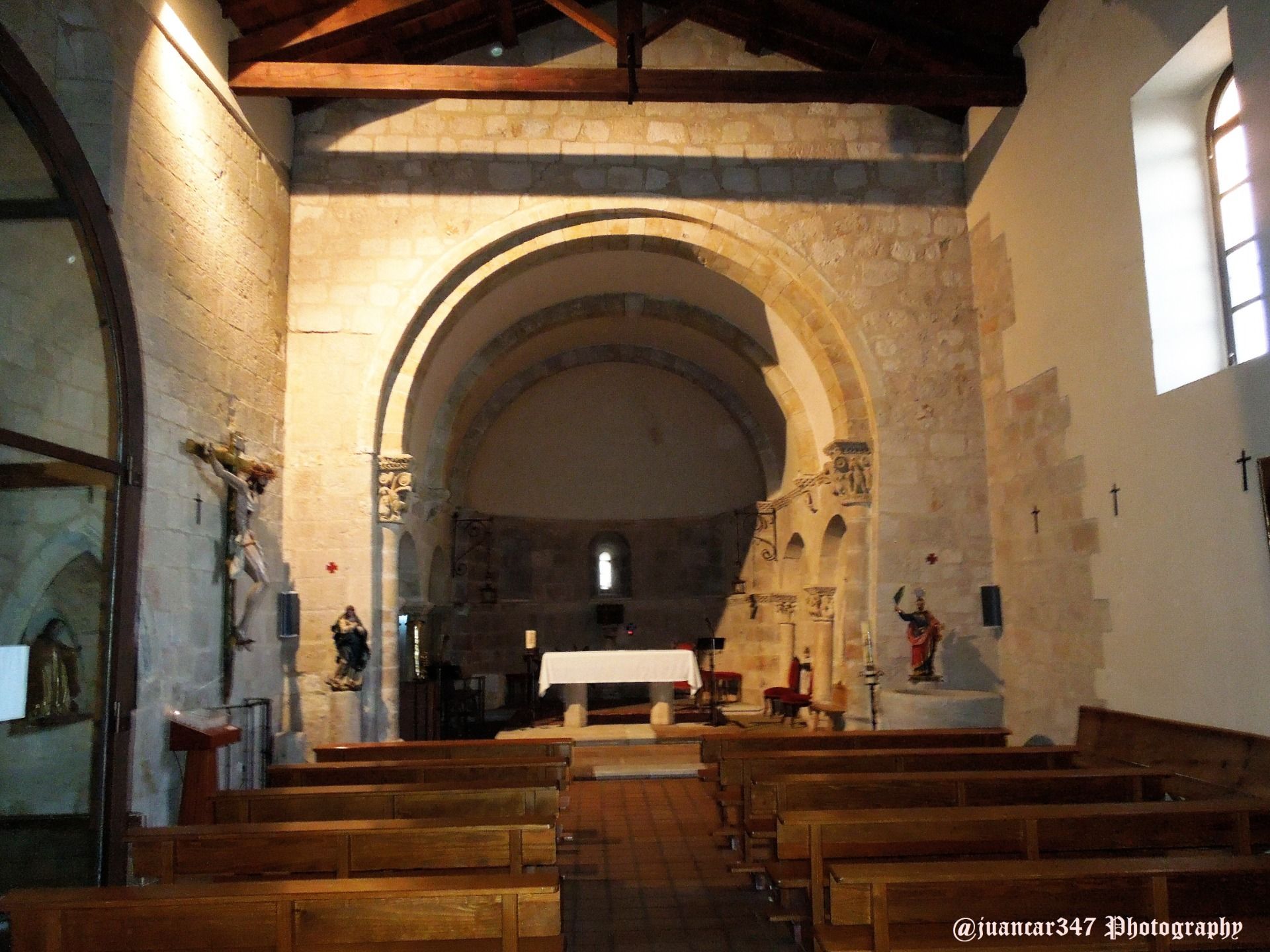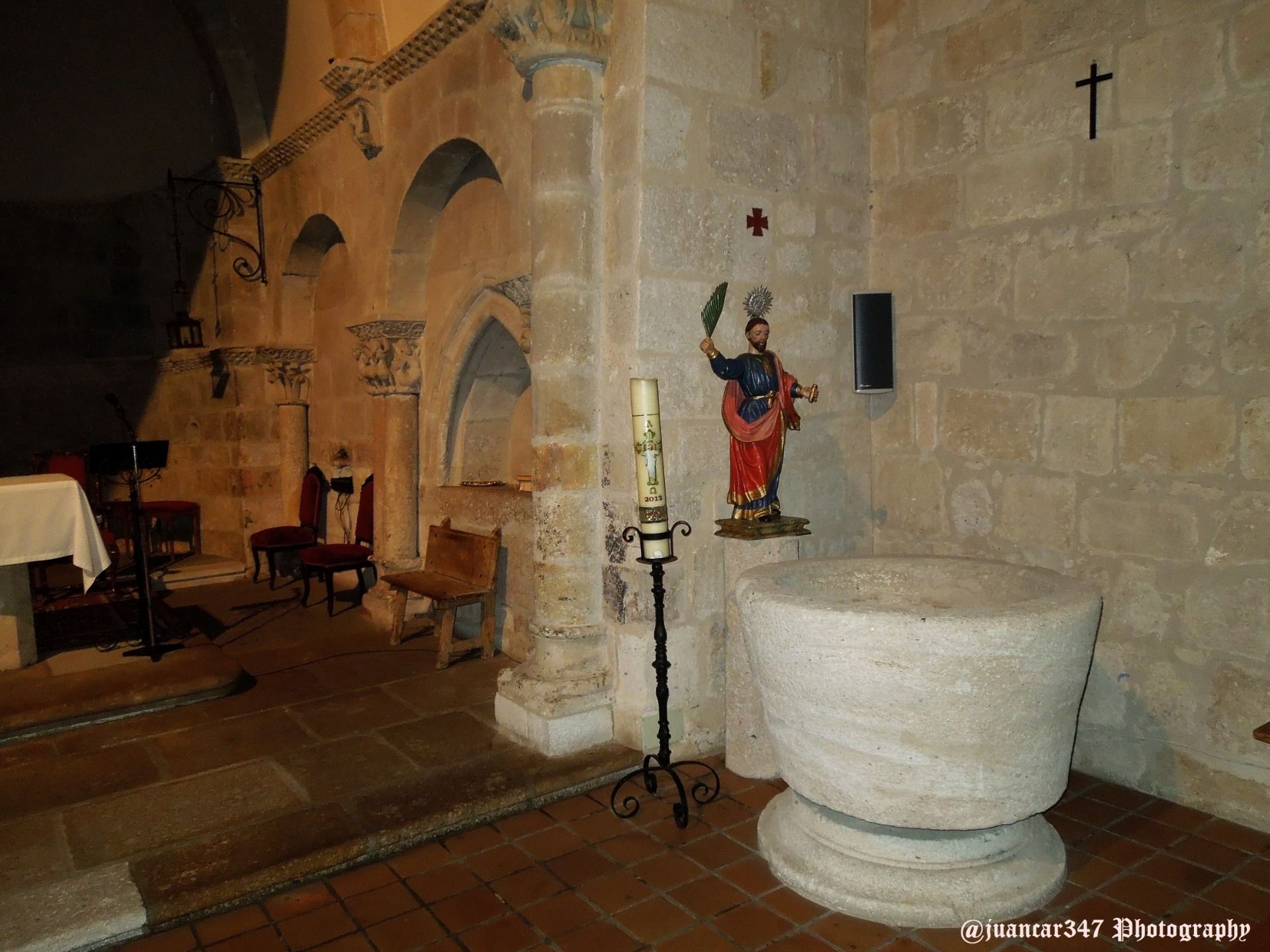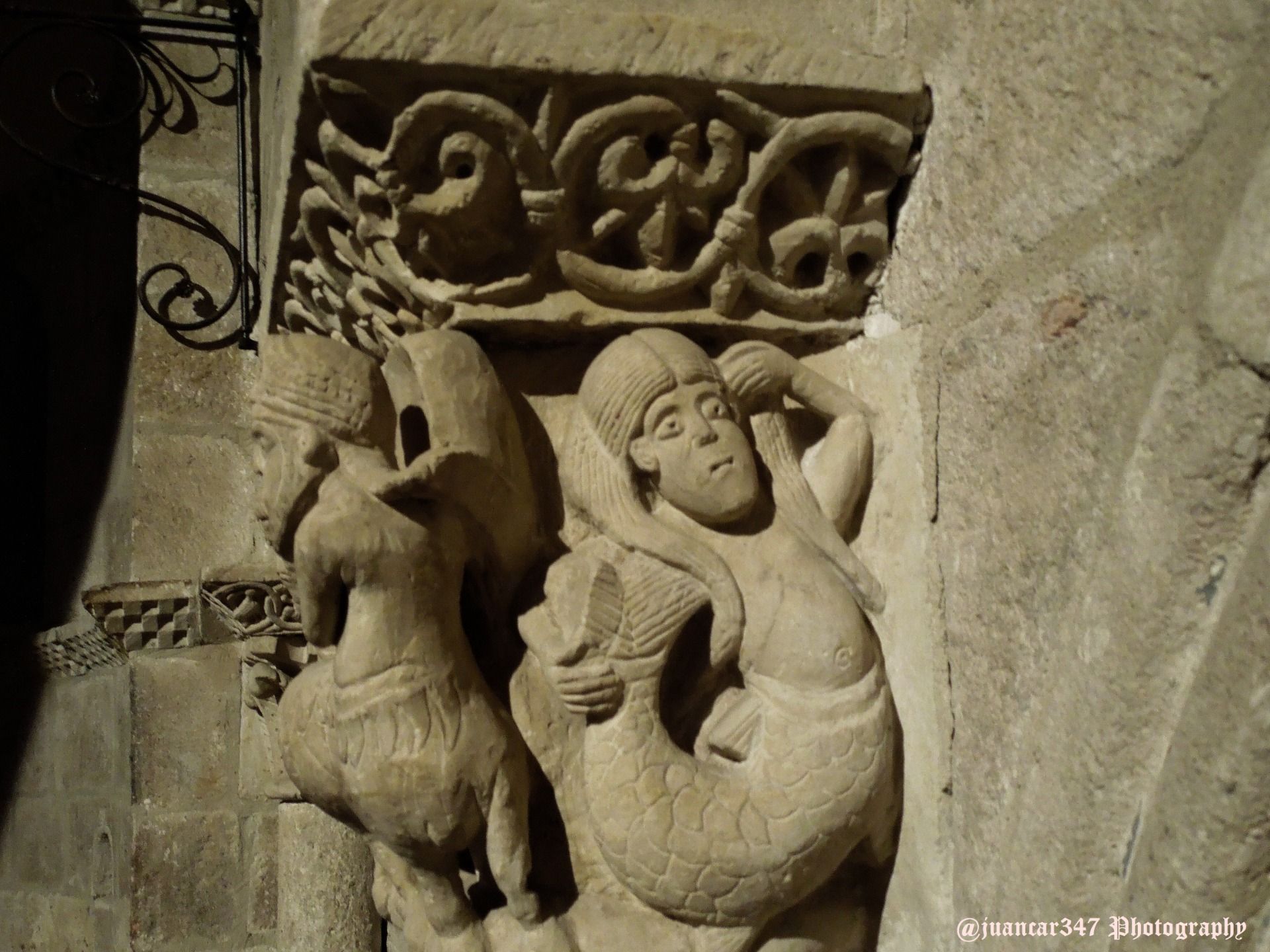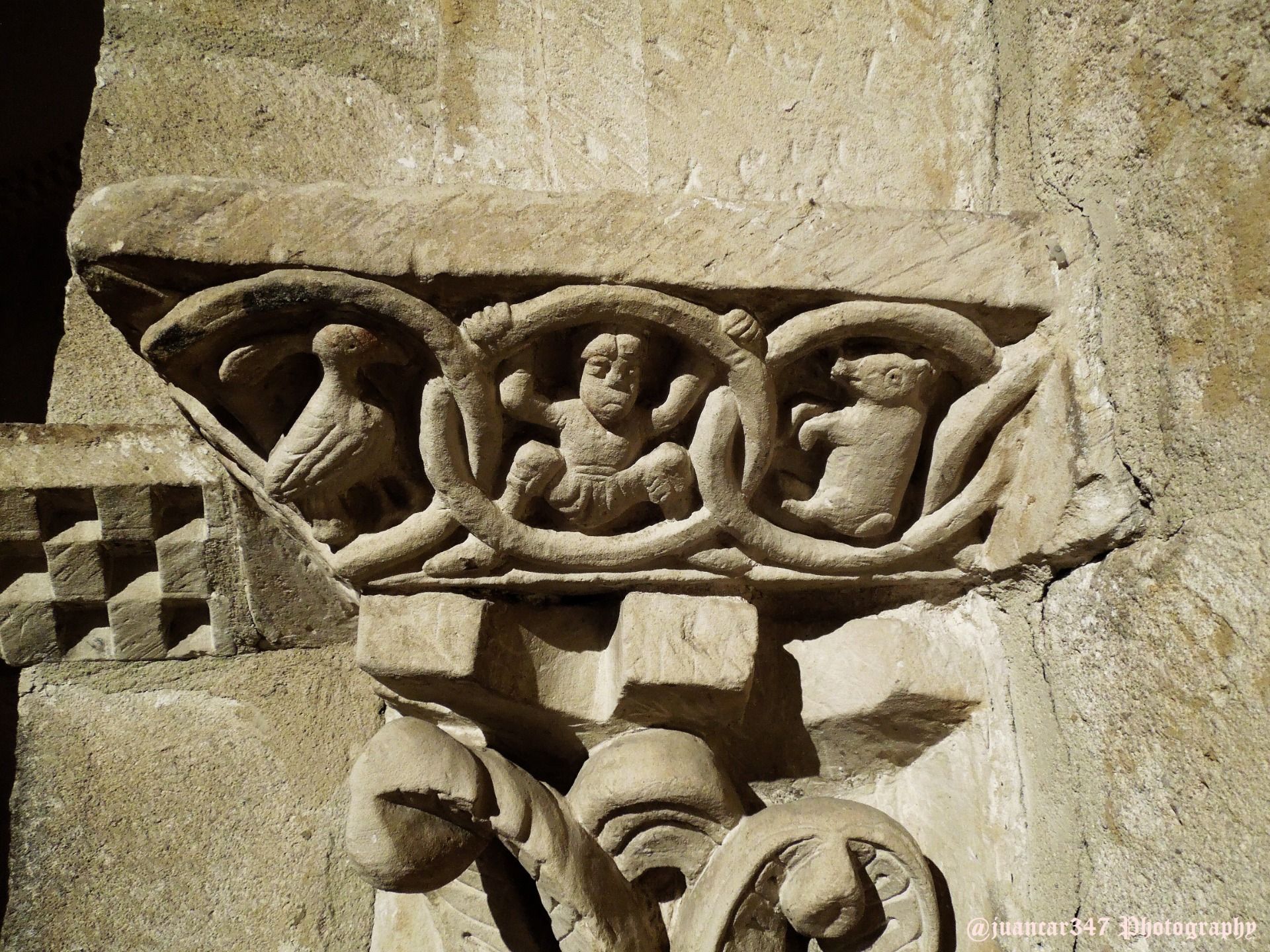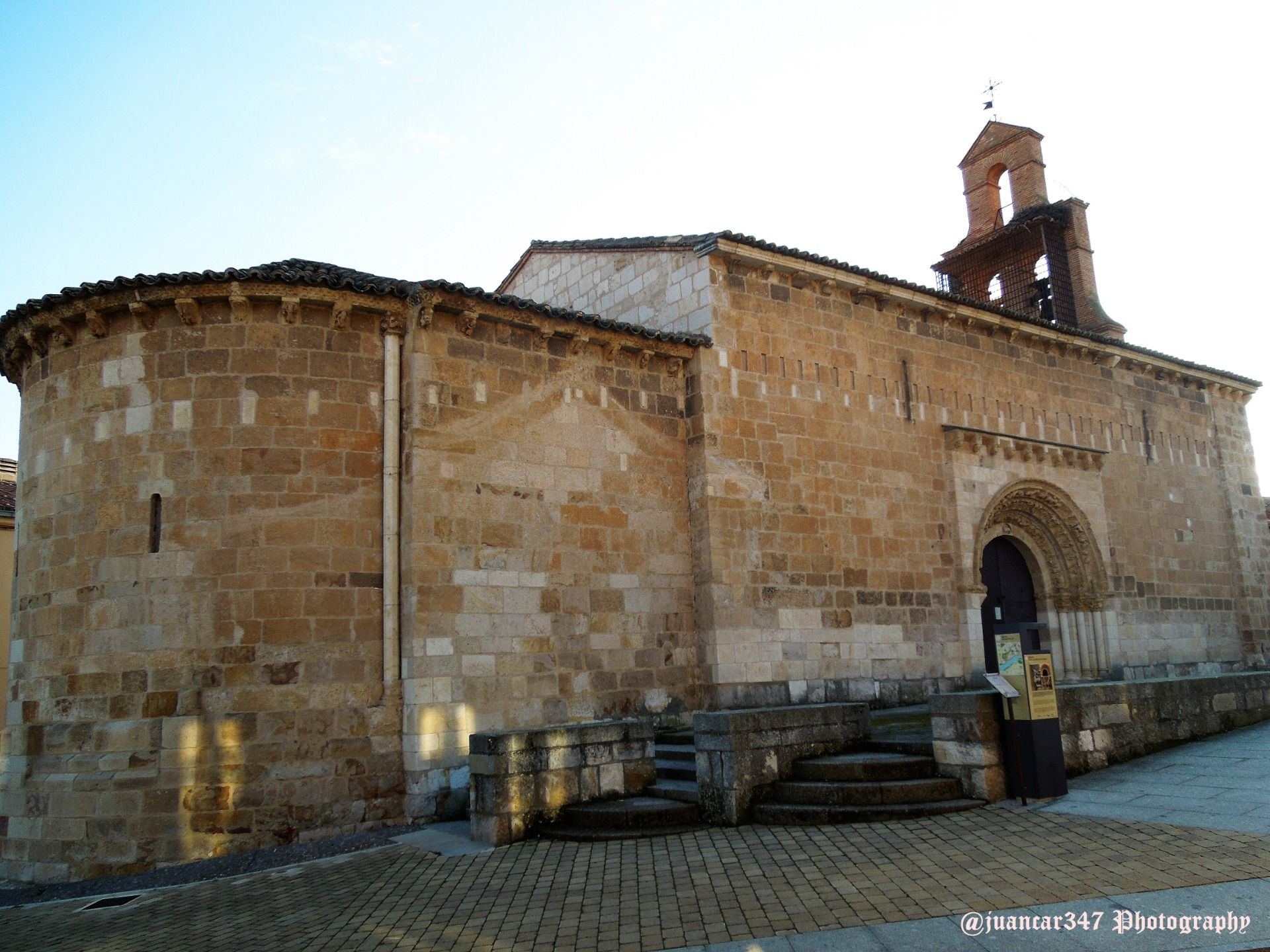Outside the ancient medieval walls and also located just a few meters beyond the old bridge, the church of San Claudio de Olivares also induces a moment to stop and get carried away by that seductive Muse that is always speculation.
Away from the humble constitution of its neighbor, the church of Santiago de los Caballeros, in San Claudio de Olivares, we find the vision of a solid temple, whose exterior sculptures, although affected by the impassive action of time and erosion, they show some messages that help us understand, at least to some extent, how everyday life was going on in that dark Middle Ages in which the stonemason workshops lifted it, surely with more means than those available for the construction of the neighboring temple of Santiago.
The seasons where sowing and harvesting occur, the typical slaughter of the pig and even where it is determined on what is the most appropriate time to initiate war actions - generally, in spring and summer - and the subsequent rest with a good Household fire in the harsh winters, they are conveniently collected in the graceful images that make up the monthly ones that are noticed in its main entrance porch.
A portico, in which we also see references to the different workshops and guilds and where there is no lack of allusions to music - associated, however, at that time, to the licentious life - that given the situation of the temple, is practically in front of the imposing cathedral - well visible the tower and the wonderful dome that characterize it - not far, either, from the palace where the Cid Campeador is supposed to be housed, from the so-called Portillo de la Traición and from the Doña Urraca castle.
With this background, they should not be surprised that Zamora has been one of the great medieval villages and that there are innumerable details and legends that make it a city with a history not only ancient, but also complex, which would fill by itself a thick volume of exciting facts, whose echo is felt by these ancient monuments, of which there is so much left over.
It is also true, as I have insisted on other occasions, that when one tries to deepen in a peculiar artistic style, such as Romanesque art, one does not take long to conclude that, in the same way as that great critic thought. Art historian, who was the Italian Enrico Castelli about that throughout these times and in later times one could speak of painters-theologians, observing certain sculptural representations of the interior of this church of San Claudio de Olivares, I have always had the feeling, that following Castelli's reasoning, there were also, especially in the late Middle Ages, stonecutters-theologians, with the difference that instead of using the fragile brushes, they used the mace and chisel to present an interesting part of those elements, supposedly fantastic or mythological, of which the great Swiss psychologist CG Jung said he had to be treated like patients.
Ready to Blog & Earn?
With TravelFeed, easily start your own travel blog and earn as you go. It's the smart platform for travelers who want to profit from their passion. Create a free account
Because leaving aside the old topic of as much centaurs, as harpies, as mermaids were representatives of something as ambiguous as sins and lusts, their presence, in places as close to the altar, as in this case, went much further and would tend, from a psychological point of view, to be containers of that part of our primitive consciousness - or if you prefer, of that reptilian heritage - easily motivated by the fierce prerogatives of the most basic and wild, thematic instincts that, although they do not believe it, They are currently applied not only in the social field but also in the business field.
But if this is a detail that can really surprise us, especially if we are used to thinking about the Middle Ages as in an era that shone particularly for its obscurantism, it is still interesting to check the style, precisely of these sculptures, and comparing it with certain similar elements found in Asturian churches, to understand what could have been part of the quarry's itinerary or of the stonecutters' workshops that raised this church and observe, that after all, the opening of the old communication channels, which recovered again with The Way of Saint James or Way of the Stars, were the best vehicle of communication and the reestablishment of a cultural world that seemed totally dejected after the fall of the Western Roman Empire.
Review, finally, the presence of two saints of the roads, very particular: San Antón, bearer in his robe of the Tau cross and reference in terms of the cure of a terrible disease, such as the so-called fire of Saint Anton and another character, that far from being the popular San Roque, although like him, is dressed as a pilgrim and accompanied by the dog and bread, shows a wound on his shin to indicate that it is San Lazaro, patron of the lepers and the presence in the place of both, denotes another aspect that made Zamora a great village in medieval times: the existence of hospitals and lazarets to meet the large traffic of pilgrims who were heading to Santiago de Compostela and even beyond, to the misty Coasts of Death and Finis Terrae or End of the World.
Don't Forget: Get Travel Health Insurance!
To make your trip a worry-free experience, TravelFeed recommends SafetyWing Nomad Insurance. It provides comprehensive health coverage while you travel, so you can focus on exploring, not the unexpected. Get a quote here
NOTICE: Both the text and the accompanying photographs are my exclusive intellectual property.
Travel Resources for your trip to Spain
Recommended by TravelFeed
Flights: We recommend checking Kiwi.com to find the best and cheapest flights to Spain.
Accomodation: Explore the best places to stay in Spain on Booking.com, Agoda and Hostelworld.
Travel Insurance: Medical emergencies abroad can be pricey, but travel health insurance is not. We always use SafetyWing for affordable and reliable coverage.
Car Rental: For hassle-free car hiring, DiscoverCars is our trusted choice with a wide selection of vehicles.
Internet: Got an eSIM compatible phone? Airalo is perfect for reliable internet access during your trip. Just install it before you go, and you're set!
Day Trips & Tours: We recommend GetYourGuide for a variety of well-organized and enjoyable activities.
Travel Planner: Need a hand planning? Our free travel planner chatbot is your personal guide to Spain. Chat now.
Disclosure: Posts on TravelFeed may contain affiliate links. See affiliate disclosure.
